
How to Use body Dehydration sensor: Examples, Pinouts, and Specs
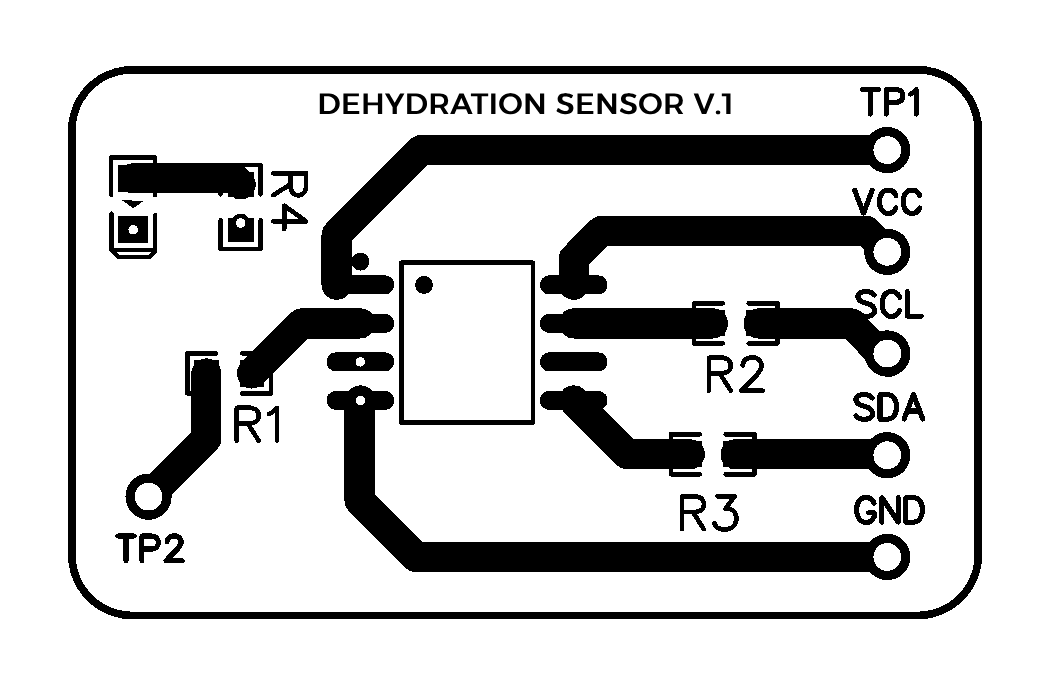
 Design with body Dehydration sensor in Cirkit Designer
Design with body Dehydration sensor in Cirkit DesignerIntroduction
The Body Dehydration Sensor (BDS) by Cloudberry Inc. is an innovative electronic component designed to monitor hydration levels in the human body. It measures key physiological parameters including body temperature, heart rate, and skin conductance to determine the level of dehydration. This sensor is crucial for athletes, patients in healthcare settings, and individuals in extreme environments where maintaining proper hydration is essential for health and performance.
Explore Projects Built with body Dehydration sensor
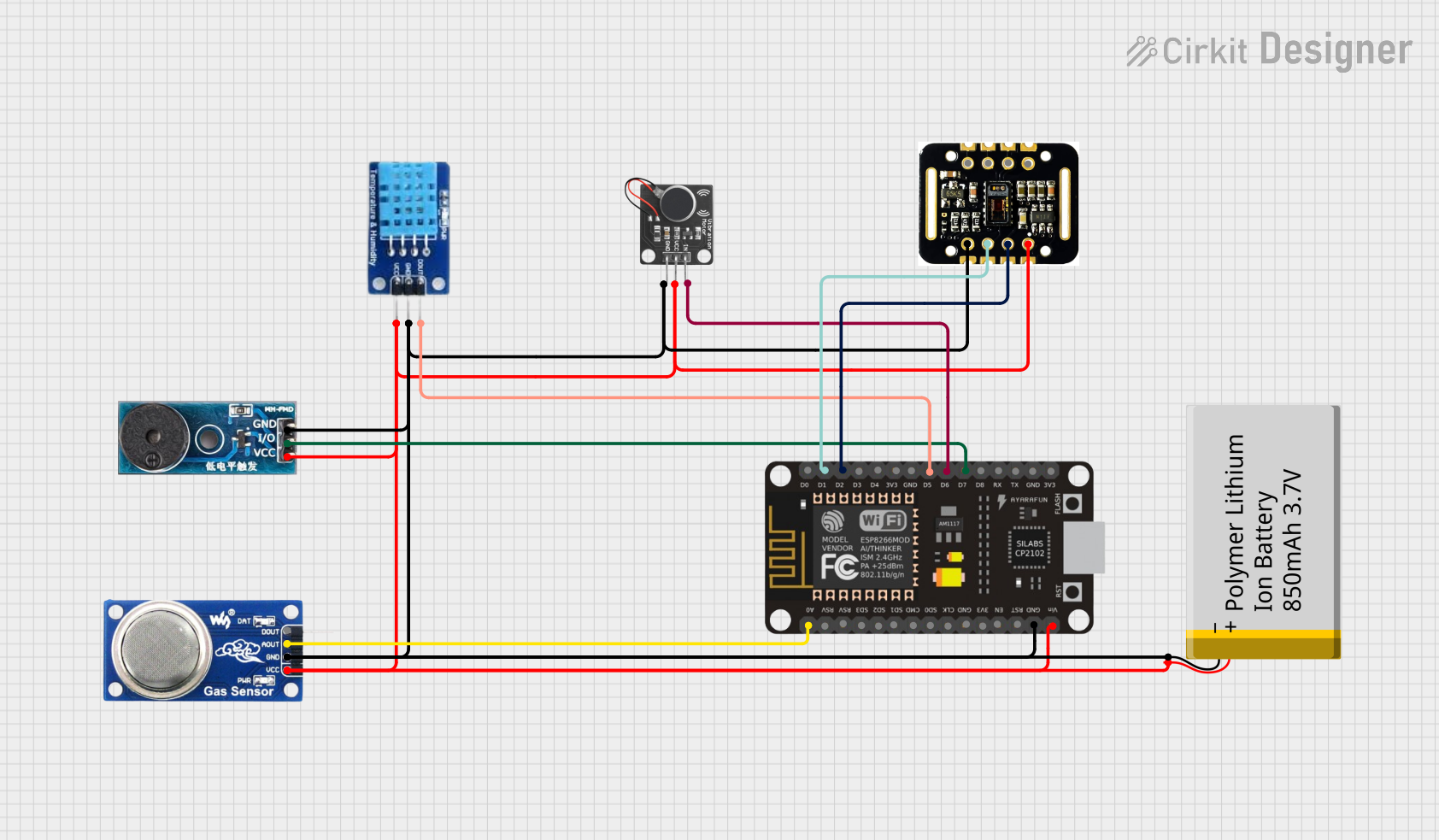
 Open Project in Cirkit Designer
Open Project in Cirkit Designer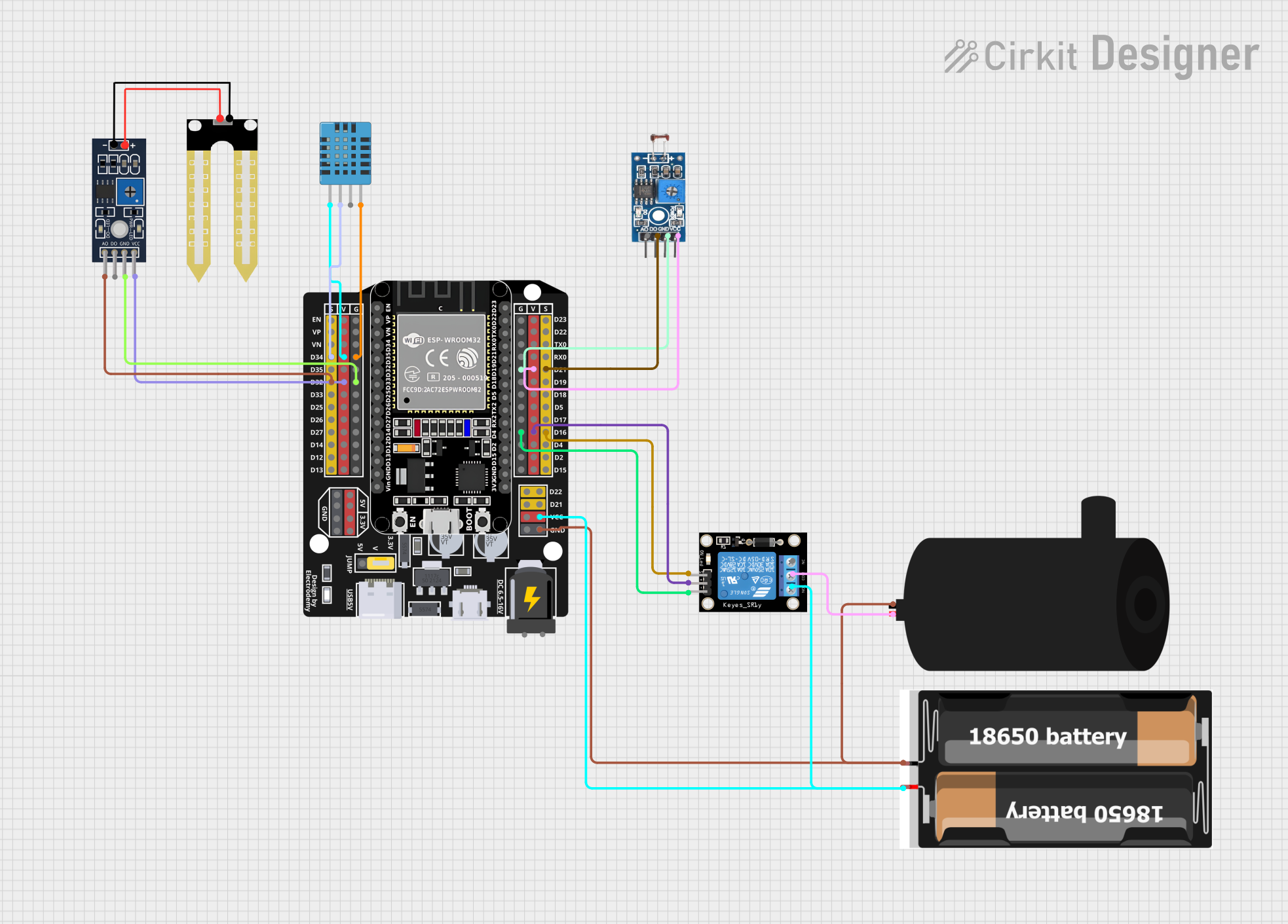
 Open Project in Cirkit Designer
Open Project in Cirkit Designer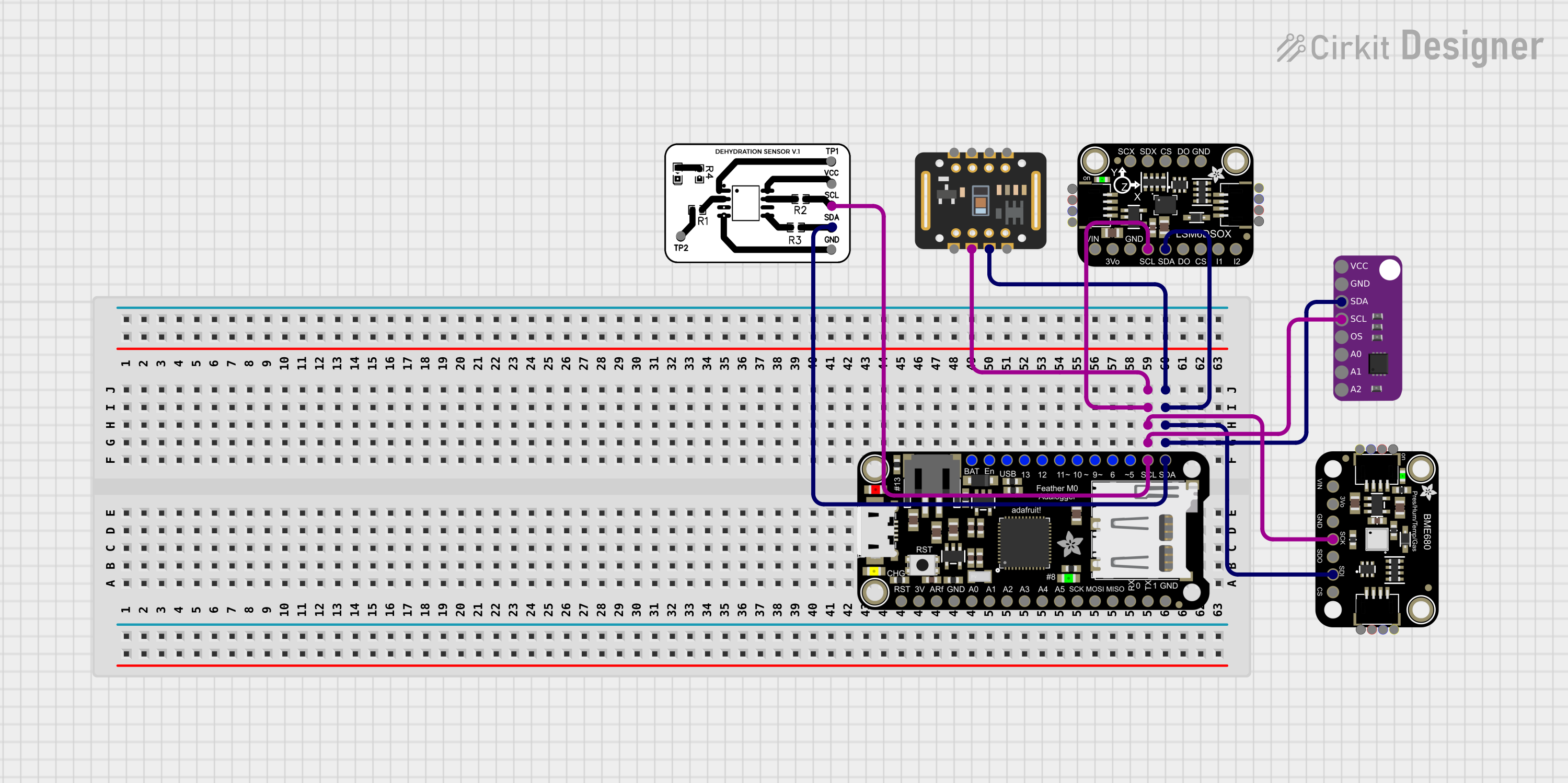
 Open Project in Cirkit Designer
Open Project in Cirkit Designer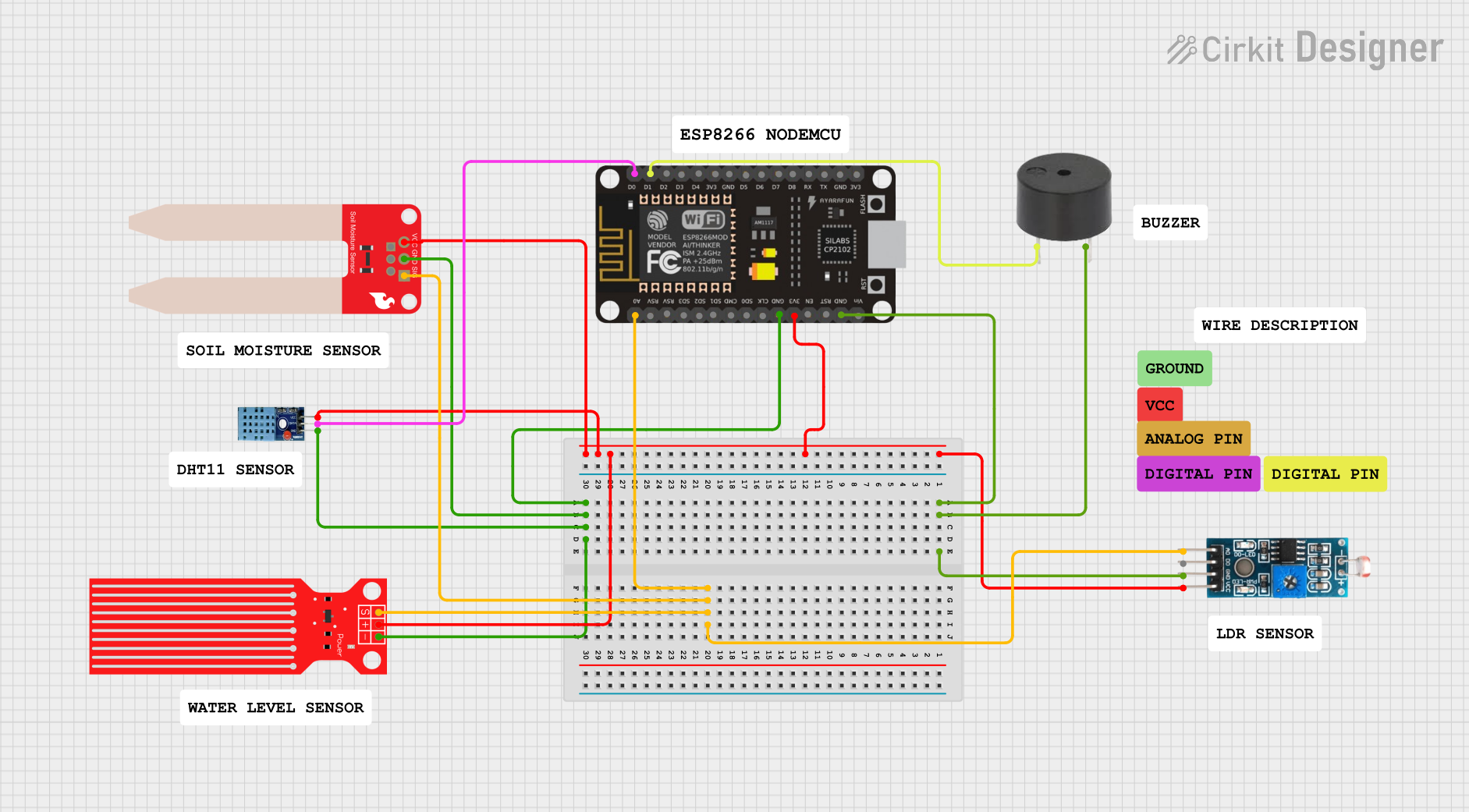
 Open Project in Cirkit Designer
Open Project in Cirkit DesignerExplore Projects Built with body Dehydration sensor

 Open Project in Cirkit Designer
Open Project in Cirkit Designer
 Open Project in Cirkit Designer
Open Project in Cirkit Designer
 Open Project in Cirkit Designer
Open Project in Cirkit Designer
 Open Project in Cirkit Designer
Open Project in Cirkit DesignerCommon Applications and Use Cases
- Sports and fitness monitoring
- Medical diagnostics and patient monitoring
- Personal health and wellness devices
- Research studies on hydration and health
Technical Specifications
Key Technical Details
- Operating Voltage: 3.3V - 5V
- Current Consumption: 10mA (typical)
- Measurement Range:
- Temperature: 32°F to 113°F (0°C to 45°C)
- Heart Rate: 30 to 250 beats per minute
- Skin Conductance: 0 to 100 µS
Pin Configuration and Descriptions
| Pin Number | Name | Description |
|---|---|---|
| 1 | VCC | Power supply (3.3V - 5V) |
| 2 | GND | Ground connection |
| 3 | TEMP | Analog output for temperature |
| 4 | HR | Digital pulse output for heart rate |
| 5 | SC | Analog output for skin conductance |
Usage Instructions
How to Use the Component in a Circuit
- Connect the VCC pin to a 3.3V or 5V power supply.
- Connect the GND pin to the ground of the power supply.
- Connect the TEMP pin to an analog input on your microcontroller to read temperature.
- Connect the HR pin to a digital input on your microcontroller to read heart rate.
- Connect the SC pin to another analog input on your microcontroller to read skin conductance.
Important Considerations and Best Practices
- Ensure that the power supply is stable and within the specified voltage range.
- Use shielded cables for the analog signals to minimize noise and interference.
- Place the sensor in a location with good skin contact for accurate readings.
- Avoid placing the sensor near heat sources or in direct sunlight to prevent false readings.
Example Code for Arduino UNO
// Define sensor pins
const int tempPin = A0; // TEMP pin connected to A0
const int heartRatePin = 2; // HR pin connected to digital pin 2
const int skinConductancePin = A1; // SC pin connected to A1
void setup() {
Serial.begin(9600);
pinMode(heartRatePin, INPUT);
}
void loop() {
// Read temperature
int tempValue = analogRead(tempPin);
float temperature = (tempValue * 5.0 / 1024.0) * 100; // Convert to temperature
// Read heart rate
int heartRateValue = pulseIn(heartRatePin, HIGH);
int heartRate = 60000 / heartRateValue; // Calculate BPM
// Read skin conductance
int skinConductanceValue = analogRead(skinConductancePin);
float skinConductance = (skinConductanceValue * 5.0 / 1024.0) * 100; // Convert to µS
// Print the values
Serial.print("Temperature: ");
Serial.print(temperature);
Serial.println(" C");
Serial.print("Heart Rate: ");
Serial.print(heartRate);
Serial.println(" BPM");
Serial.print("Skin Conductance: ");
Serial.print(skinConductance);
Serial.println(" µS");
// Delay before next reading
delay(1000);
}
Troubleshooting and FAQs
Common Issues Users Might Face
- Inaccurate Temperature Readings: Ensure the sensor is not exposed to external heat sources and is in good contact with the skin.
- Erratic Heart Rate Values: Check the sensor placement and ensure there is no movement artifact affecting the signal.
- Low Skin Conductance Readings: Make sure the sensor has proper skin contact and the skin is not overly dry.
Solutions and Tips for Troubleshooting
- If readings are unstable, check the power supply and grounding connections.
- Use a low-pass filter in your code to smooth out the analog readings.
- Calibrate the sensor using known reference values before taking critical measurements.
FAQs
Q: Can the sensor be used in water-based activities? A: The BDS is not waterproof and should not be submerged in water.
Q: How often should the sensor be calibrated? A: Calibration should be performed whenever there is a significant change in the operating environment or at regular intervals as part of maintenance.
Q: Is the sensor suitable for continuous monitoring? A: Yes, the BDS is designed for continuous monitoring, but ensure that the sensor maintains good skin contact for accurate readings.